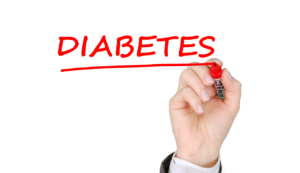Type 1 Diabetes vs Type 2 Diabetes

Diabetes Facts
All of the cells in your body depend on different forms of sugars to make energy (mostly glucose though).
Insulin works like a key to unlock the doors of the cells and let the sugar in to be used.
Adults get newly diagnosed with Type 1 Diabetes too, it’s not just a childhood disease like a lot of marking will make you think.
Diabetes: Type 1 vs Type 2
Type 1 Diabetes: The pancreas (insulin factory) quits working or becomes dysfunctional.
Type 2 Diabetes: The key holes and the doors are broken or jammed and the insulin “key” won’t fit in them as well or at all. This is known as insulin resistance.
In Type 1, you have to import insulin (aka injections), because you can’t make your own insulin anymore, ever.
Insulin pumps (outside pancreas) give a continuous flow of insulin and can sense sugar levels. It tries to operate as much like a natural pancreas would.
In Type 2, the medications are being developed to encourage your body to use your natural insulin as best and as long as possible.
There are lots of ways to get in a door if they key won’t work, thus there are lots of different medications to help in Type 2.
Holla!
Shout out to Rachel Mayo (@rachelcmayo) for her inspiration for this topic and for her strength and courage to not be scared of #T1D.
Connect with me
Support us on Patreon
*NEW* Join the Pharmacist Answers Podcast Community on Facebook
Subscribe: iTunes, Stitcher, GooglePlay, TuneIn Radio


